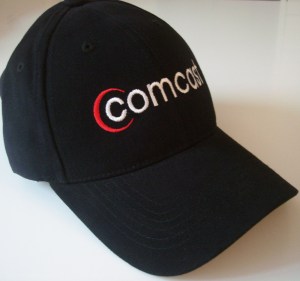
After all, these four companies collectively have 80 million broadband customers, meaning these four ISPs now have around 73% of all broadband customers in the country. They also have about 73% of all traditional cable customers, at 58 million, but that number has been tumbling and is down from 64 million just a year ago. It was only a few years ago where the broadband and cable TV markets crossed and broadband became the predominant product for these companies – but since then, the gap is growing quickly between the two product lines.
FierceVideo published an article in September that interviewed the CEOs of Comcast, Charter, and AT&T that asked each their views on the future of cable TV. Their responses are not surprising in an industry where traditional cable subscribers are shrinking quickly.
Brian Roberts of Comcast said he is “indifferent” for having customers on traditional cable TV or in Comcast’s Flex product that is free and ad-supported. And that doesn’t even count in the 14 million people who are now watching Comcast’s online Peacock service. Comcast sees all video products as important in making Comcast’s broadband customers stickier. AT&T’s John Stankey said something similar. He says he values the traditional cable TV product, but that the company is betting on the online offerings like AT&T TV and HBO Max. Charter is the only large company still on the traditional track, and the company added cable customers in the second quarter of this year. But Charter CEO Tom Rutledge foresees growth coming to an end since the company feels obligated to pass video content rate increases on to cable customers.
Both Comcast and Charter have made up some of the loss in cable customers by launching a successful cellular product. At the end of the third quarter this year, Comcast had 2.6 million cellular customers and Charter had grown to 2 million. Both companies will be working to increase the profit margins of the cellular product by shifting traffic from resold cellular to company-owned small cell sites. Both companies have a built-in advantage in that they already own fiber deep into neighborhoods, so both should be able to deploy cellular small cells without having to lease transport. I find it interesting that these two traditional cable companies seem to be doing a better job of bunding in cellular service than was ever done by AT&T and Verizon – those two companies never seemed to find a way to do that.
In my writing about the industry, I have lately been referring to these big companies as ISPs or incumbents because the terms cable company and telephone company seems to have lost relevance. It’s becoming hard to distinguish between Comcast and AT&T in markets where AT&T is competing against Comcast using gigabit fiber.
I’m at a loss to explain why the industry continues to call Comcast a cable company. The percentage of revenue that comes from cable TV is dropping quickly, and the share of margin from cable is dropping even faster. The amount of money that AT&T makes from traditional telephone service is so small that it’s a challenge to even find the word telephone in the company’s financial report. But I guess old habits are hard to break. We instantly know who is being referred to when somebody says “large cable companies” or “large telcos”. But I’m still looking forward to a time when these monikers are so rare that we’ll have to explain what they mean to children.
2 replies on “Are There any Cable Companies Left?”
They should be called BSPs not ISPs IMO.
The issue is related to federal/state laws and regulations, until these change we will have the traditional telcos and cable companies. But when one thing changes, another issue pops up.
Competition is good but the numbers don’t work to have more than two companies with lines in the ground in front of everyone, market is too diluted and ROI is not there for a third company. The only way to make it work for true 3 or more competitors is using wireless or have one owner of what is in the ground, something like municipal-owned fiber, which then gets leased out to service providers. Government owns the fiber but they are not the service provider.
The other issue is that these are private for-profit companies that are using the public right-a-way, unless they are a public utility like electric, water or gas, they need to pay to for this right. Some will say “lets make the ISP a public utility!”, then you have removed the competition. I thought we wanted competition?